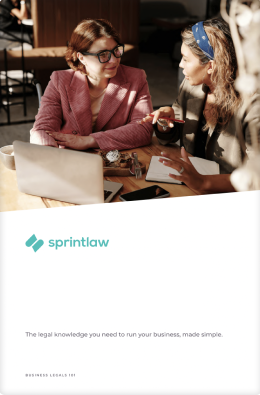Contents
So you’re a fresh, new startup and you’re looking to raise capital to expand and grow in Australia.
You may have considered exploring preference shares or perhaps you’ve looked towards your friends and family for funds.
But, if you’ve captured the interest of investors, a smart way to finance your venture is by using a Simple Agreement for Future Equity, also known as a SAFE Note.
SAFE Notes were created in late 2013 by Silicon Valley accelerator Y Combintator and are designed to be (you guessed it!) simple agreements — typically 5-10 page documents. They’re a concise and useful instrument to connect your business and your investors.
Navigating SAFE Notes can be a daunting process, but don’t worry — we’ll make it simple (pun intended!) for you.
What Is A SAFE Note?
A SAFE Note allows you to take on investment that will convert into equity in the future.
If your business is looking to raise funds in its early stages, a SAFE Note may be the instrument you need.
SAFE Notes have become quite popular these days and are a key early-stage fundraising instrument for many startups.
They are similar to Convertible Notes in that both instruments can eventually be converted to equity. However, the key difference is the flexibility and simplicity SAFE Notes offer as they are fairly template and easy to prepare.
How Does A SAFE Note Work?
SAFE Notes allow an investor to be issued shares in a future priced round — meaning no specific share price needs to be determined at the time of the raise.
Under this arrangement, the investor will gain the right to convert this amount into equity when a pre-agreed trigger event occurs.
Typically, the pre-agreed trigger event is a priced equity round by the company, typically the next funding round.
The advantage of this approach is that you can defer the valuation of your company to a later date.
The number of shares the investor will receive will depend on the amount they have paid upfront and the share price of the priced equity round or liquidation event.
Discount Prices And Valuation Caps
One of the most important features of a SAFE Note is a valuation cap. This determines the highest price that can be used to set the conversion price.
A discount rate in a SAFE Note entitles the investor to purchase shares at a discounted price.
Without a valuation cap or a discount price, the SAFE Note simply converts into equity at the price of the issuing company’s subsequent round.
Valuation caps and discount rates are investor-friendly by nature, and are good ways to incentivise and reward those who believe in your work and want to support you in your early stages.
It’s important to remember though that some investors can take advantage of these perks. You need to be careful when negotiating to make sure the right balance is struck between these incentives and the risk taken by the investor.
Why Should I Use A SAFE Note?
SAFE Notes hold many advantages compared to other forms of capital raising, mainly due to their simple nature. Below are some of the reasons you should consider using a SAFE Note in Australia.
Simplicity
Using a SAFE Note is simpler than using a Convertible Note. It is usually very short, making it easier to understand. In contrast, a Convertible Note is more complicated with terms you’d usually see in a debt instrument.
Negotiation
Generally in a SAFE Note, you’ll only really have to negotiate the valuation cap and discount rate. This is unlike Convertible Notes that contain other terms like maturity date and interest rate.
Flexibility
SAFE Notes give startups a lot of freedom as there’s no need for valuation.
Not having a maturity date and repayment obligations can also give you a piece of mind, as you’re not constantly worrying about cashflow and threats of insolvency.
What To Take Away…
Using SAFE Note is a simple yet effective way for small businesses and startups in Australia to raise the capital they need.
They are excellent vehicles for establishing funds at an early stage and can be issued quickly and efficiently.
Luckily, we have lawyers in Australia and the UK who are more than happy to help you out.
So, if you’re considering how to best protect your business, give us a call on 1800 730 617 or email us at team@sprintlaw.com.au and we’ll happily help you out!
Get in touch now!
We'll get back to you within 1 business day.













0 Comments on "A Guide To SAFE Notes"